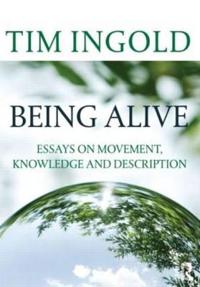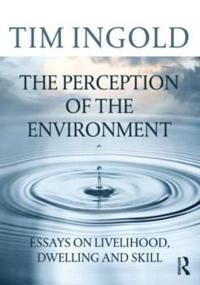Lines (Storpocket)
avTim Ingold
ISBN: 9780415424271 - UTGIVEN: 200705This is the first book to explore the production and significance of lines. As walking, talking, gesticulating creatures, human beings generate lines wherever they go: here, Tim Ingold lays the foundations for an anthropological archaeology of the line. He investigates: speech and song in the cultur[...]
Making (Inbunden)
avTim Ingold
ISBN: 9780415567220 - UTGIVEN: 2009-07-01Takes a fresh approach to the study of four related disciplines: anthropology, archaeology, art and architecture. This title argues that these four disciplines are concerned with exploring, interpreting and describing the worlds we inhabit and the ways we perceive them.[...]
Making (Storpocket)
avTim Ingold
ISBN: 9780415567237 - UTGIVEN: 201010Making creates knowledge, builds environments and transforms lives. Anthropology, archaeology, art and architecture are all ways of making, and all are dedicated to exploring the conditions and potentials of human life. In this exciting book, Tim Ingold ties the four disciplines together in a way th[...]
Being Alive (Storpocket)
avTim Ingold
ISBN: 9780415576840 - UTGIVEN: 201104Anthropology is a disciplined inquiry into the conditions and potentials of human life. Generations of theorists, however, have expunged life from their accounts, treating it as the mere output of patterns, codes, structures or systems variously defined as genetic or cultural, natural or social. Bui[...]
The Life of Lines (Inbunden)
avTim Ingold
ISBN: 9780415576857 - UTGIVEN: 2015-04To live, every being must put out a line, and in life these lines tangle with one another. This book is a study of the life of lines. Following on from Tim Ingold's groundbreaking work Lines: A Brief History, it offers a wholly original series of meditations on life, ground, weather, walking, imagin[...]
The Life of Lines (Pocket)
avTim Ingold
ISBN: 9780415576864 - UTGIVEN: 2015-04To live, every being must put out a line, and in life these lines tangle with one another. This book is a study of the life of lines. Following on from Tim Ingold's groundbreaking work Lines: A Brief History, it offers a wholly original series of meditations on life, ground, weather, walking, imagin[...]
The Perception of the Environment (Häftad)
avTim Ingold
ISBN: 9780415617475 - UTGIVEN: 201103In this work Tim Ingold offers a persuasive approach to understanding how human beings perceive their surroundings. He argues that what we are used to calling cultural variation consists, in the first place, of variations in skill. Neither innate nor acquired, skills are grown, incorporated into the[...]
Imagining Landscapes (Inbunden)
avMonica Janowski, Tim Ingold
ISBN: 9781409429715 - UTGIVEN: 201207The landscapes of human habitation are not just perceived; they are also imagined. What part, then, does imagining landscapes play in their perception? The contributors to this volume, drawn from a range of disciplines, argue that landscapes are 'imagined' in a sense more fundamental than their symb[...]
Making and Growing (Inbunden)
avElizabeth (EDT) Hallam, Tim (EDT) Ingold, Elizabeth (EDT) Hallam
ISBN: 9781409436423 - UTGIVEN: 2014-03Making and Growing brings together the latest work in the fields of anthropology and material culture studies to explore the differences - and the relation - between making things and growing things, and between things that are made and things that grow. Though the former are often regarded as artef[...]











